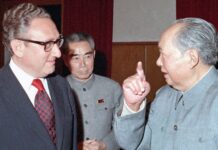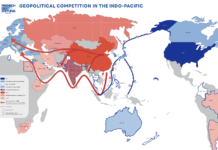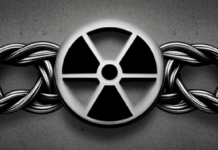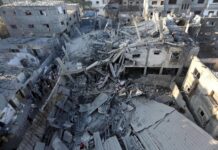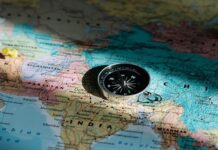Salma Malik
“When you make a peaceful revolution impossible, you are making a violent revolution inevitable.” J F Kennedy
Last I approached the red zone of Pakistan’s capital city Islamabad, a timer outside the posh Serena Hotel displayed 73 days, 07 hours and as many seconds to the curfew imposed in Indian held territory of Jammu & Kashmir. This lockdown that imprisons eight million Kashmiris is a result of India’s unilateral revocation of special autonomy status accorded to the occupied territory constitutionally since January 1950. It was not a bolt from the blue though, since Narendra Modi led National Democratic Alliance (NDA) had placed this as a primary agenda on its 2014 election manifesto and after winning the 2014 elections unsuccessfully tried to manipulate the Kashmiri legislature to achieve its aim. Fast-forward to 2019 general elections, BJP once again made the same promise to end the special status and revoke special rights of the natives of Jammu and Kashmir given to them under Article 370 and 35A which brought NDA back in power with a greater vote bank. Modi and his saffron brigade, which now also included the sitting Indian Army Chief, went for the direct assault. Winning elections based on botched Balakot strikes racking up anti-Pakistan rhetoric, and annexing the disputed territory of J&K and Ladakh, they tried to create an environment of ultimate coercion and intimidation in the occupied territory, especially targeting the Muslim majority Kashmir Valley.
Not that Delhi needed a legitimate excuse, but prejudging the discontent and resentment that was to ensue, more troops were moved to the Valley on the pretext of securing the place for the yatris of the annual Amarnath pilgrimage prior to August. The yatra which had been taking place for centuries used to be a low key event with the entire arrangement including security and logistics traditionally managed by the local Muslim population without any controversy. However, this year, the Amarnath yatra was used as a pretext by Modi and his minions to unfold their agenda to completely annex the already occupied territory. Since the Indian annexation on August 5th and the curfew that was put in place, has been discussed, condemned and debated. Even a close door UNSC consultation session and offer from the U.S. for mediation has had little success. Recently, a five women team, representing a cross section of prominent women organizations, visited the besieged Valley and brought to the fore the atrocities being committed very shrewdly under the guise of a complete lockdown by Indian security forces. Forced disappearances of Kashmiri youth, which in 73 days has reached a staggering figure of 13,000 coupled with complete denial of communication, transportation and all medical facilities, in pervasive environment of fear and dreadfulness, has fortified the ‘cloud of depression’ over the occupied Valley, as described by one of the team members.
While there is ample noise about the deoperationalization of Article 370 which accords this disputed occupied territory a special status, Article 35-A which preserved the identity and property rights of indigenous Kashmiri people is of much graver concern.
The excuse that the abrogation of these articles will create space for economic development, trade and investment is vile. In a single stroke, ownership rights of the occupied population have been seized giving Delhi a blanket authorization to instrument demographic changes and complete its occupation agenda, as per the Israeli model of occupation of the Palestinian territories. In fact, Delhi is now implementing in letter and spirit, what Israeli Prime Minister Shimon Peres had suggested during his 1993 visit to India. Peres said told Delhi that it “should not be afraid or hesitate to populate Kashmir with people from all over India. Only a demographic change in Kashmir can help India to claim it. The idea of a Muslim majority state living peacefully with a Hindu majority community is idiotic and this idea is nothing but anathema.” Additionally, this also tempers and nullifies UN resolutions, seeking a complete freeze on such engineered actions that could negatively impact the results of a plebiscite.
This is not Delhi’s first attempt at demographic manipulation. In 1947, fanatic Hindus under the Dogra rule massacred half a million people, with many seeking mass migration to Pakistan, which according to British estimates resulted in reducing the Muslim population in occupied territory to half. In 1976, more than twenty five years after the constitutional arrangements on occupied Jammu & Kashmir, ownership rights of agricultural land and real estate were given to non-Muslim migrants (West-Pakistani refugees) in Jammu under the Agrarian Reforms Act, which further affected the demographic composition of these territories. The Muslim population in Jammu has been reduced to 5% only from its actual 39%, whereas the Muslim majority Valley still has a 97% Muslim population count, for which Modi government has a carefully crafted plan of demographic engineering.
Nestled in this narrative is also an important chapter of Kashmiri struggle against occupation forces, when in May 2008, the Vohra cabinet decided to transfer land for the annual pilgrimage to the Hindu Lord Shiva’s shrine. As mentioned earlier, the Amarnath Yatra has been a centuries old tradition, which since a decade and a half has gained prominence due to Hindutva revival and increased government patronage swelling these numbers from thousands to hundreds of thousands. Under the pretext of growing number of yatris, the land was initially leased by the State assembly to the Yatra board for setting up temporary comfort facilities in Baltal for the pilgrims, with stipulations to carry out no permanent changes. At that time, a row had erupted since it seemed like a deliberate act by the Indian government to bring about a gradual demographic change in the Valley and this land allotment was seen as a step in that direction. In the face of growing opposition, this order was revoked in July 2008. However, a violent counter reaction in Jammu was orchestrated by radical Hindu organizations such as the Amarnath Yatra Sangarsh Samiti (AYSS). An umbrella group comprising 30 social and political organizations mounted an agitation so severe that it resulted in their staging an economic blockade of the Valley, torching of government assets and buildings and wide scale protests and violence against the Muslim population.
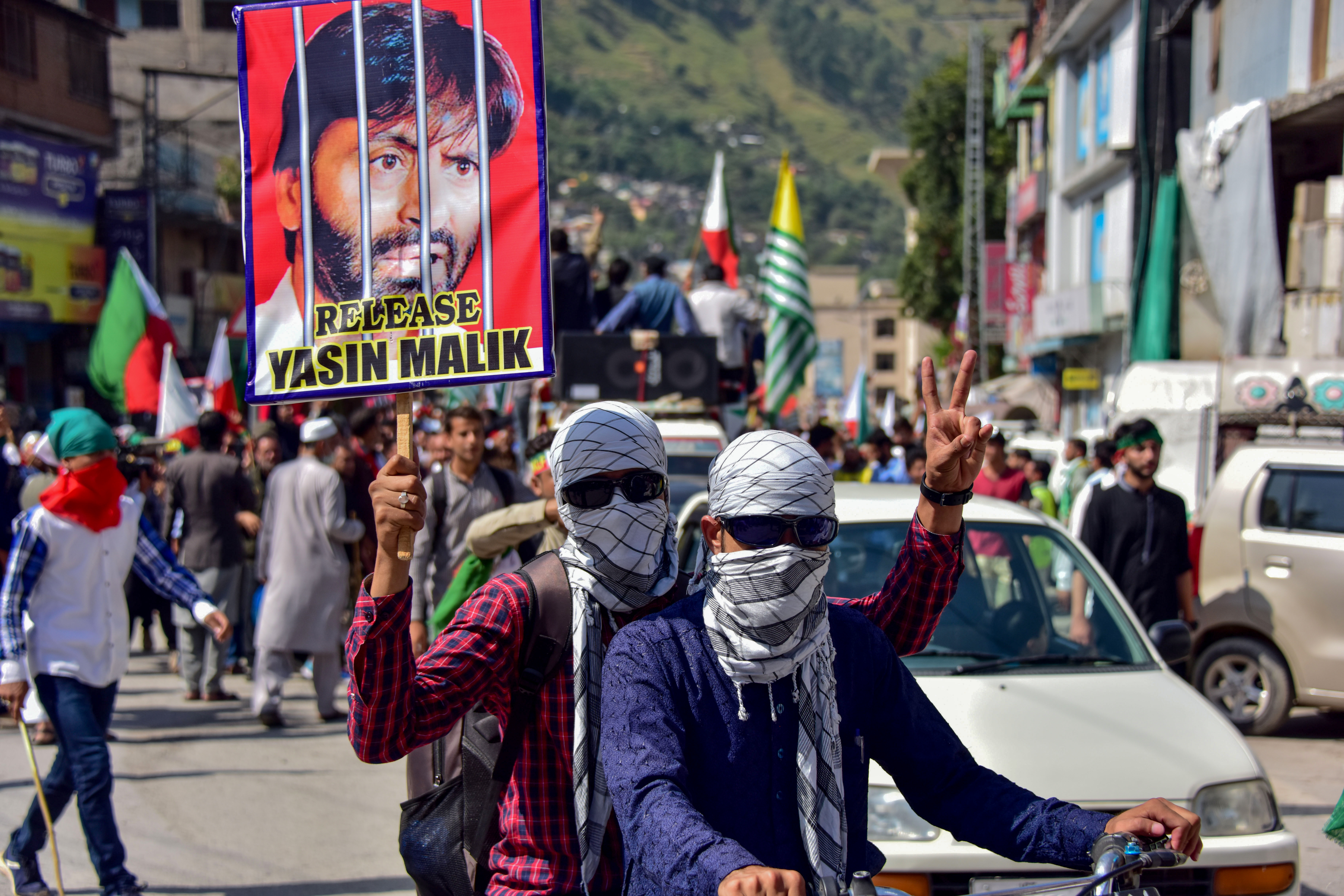
In reaction, the Muslims of the Valley alongside Hurriyat leaders such as Sheikh Abdul Aziz carried out a peaceful symbolic march towards Muzaffarabad. But the security forces opened fire, resulting in the death of Aziz and forty other peaceful marchers. This barbaric action of gross injustice infuriated the Muslims to no end, thus further exacerbating the issue with the valley becoming a virtual tinderbox, ready to flare up at a minute’s notice. Interestingly, the protests that resumed even after this tragic incident were largely non-violent and peaceful, with number of protestors growing manifold each time.
Kashmir, a highly secular and religiously tolerant area, had always been a place of interfaith harmony. JKLF leader Yasin Malik during the Yatra row questioned the sudden need of land transfer in the name of the shrine board when the Yatra had been going on for centuries. The pilgrimage, he said, was a ‘Muslim legacy and shouldn’t have been tampered with’.
The 2008 incident was one of the many purely indigenous uprisings by Kashmiris against the Indian occupation. Eleven years since the Yatra row, Kashmiri Muslims have turned the tables on Delhi. The generation raising its voice against Indian occupation has the likes of Burhan Vani as its role model. Born and grown up under the shadow of oppression and brutality, with no fear of death, they are immensely “hated by the Indian army,” as narrated by the Women leaders’ group, and are a routine target of pellet guns, executions and disappearances.
For the Kashmiri youth, the spectre of totting Indian soldiers in bunkers, valley littered with check points, daily episodes of humiliating search and capture operations, and “screams from torture chambers for a soundtrack,” are a routine affair. These fearless youth have discovered the power of mass protests and their numbers are increasing by the day. Even though their memories of the past are a testament to the atrocities suffered, their resolve for a free Kashmir knows no bounds. Chanting the slogans of, “Hum Kya Chahte? Azadi”; “Challo Challo Muzaffarabad Challo”; “Jeevey Jeevey Pakistan” and; “Hindustan Murdabad,” their verdict is clear. Kashmir is still under siege but India will not be able to wish away and mute these voices forever wanting freedom. This is the beginning of the end.
Dr. Salma Malik is Assistant Professor in the Department of Defence & Strategic Studies at Quaid-i-Azam University, Islamabad.






